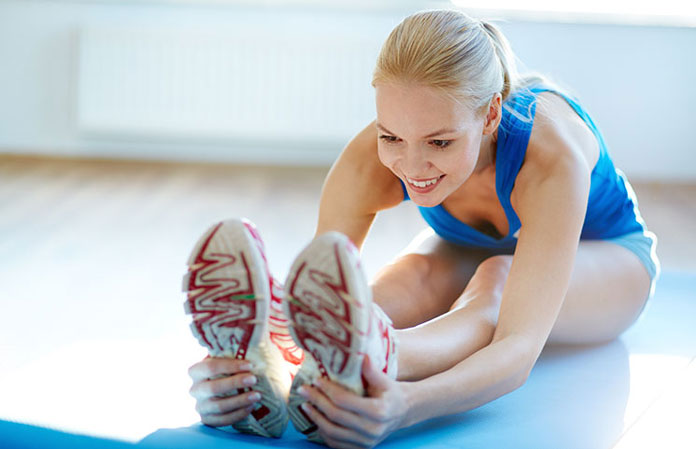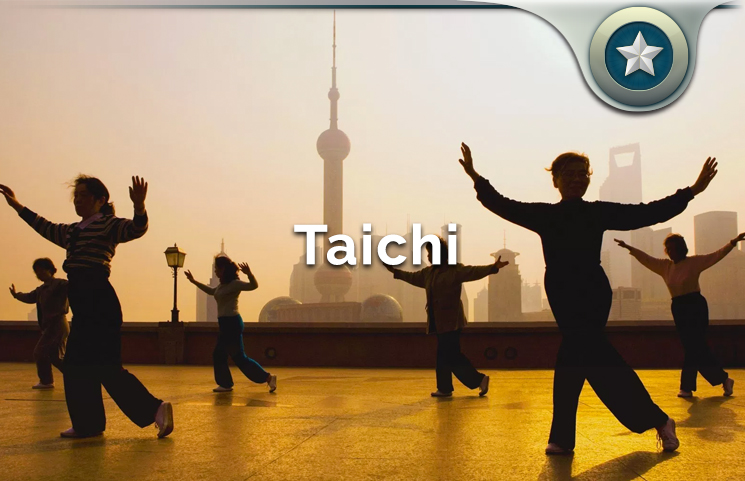Tai Chi is a gentle kind of exercise which helps you build and maintain flexibility, balance and strength, and is a fine activity that you will keep benefiting from it for the entirety of your life.
Often called “meditation in motion,” Tai Chi uses what can indeed be called “meditation motion.” Originating in ancient China in the form of martial arts, the mind and body practice has gone on to prove its worth in preventing and treating several health problems.
It is one of the few things you can start practicing right now, even if you're not in peak physical shape.
Tai Chi is a low-impact and slow-motion exercise and consists of a series of different motions that you can go through without having to pause to rest. These motions are named after actions that animals make, such as the movement called “box both ears.”
These motions require you to breathe naturally and deeply, all while keeping your attention focused on the sensations of your body.
Tai Chi Movement
According to Peter M. Wayne, who teaches medicine at the Medical School of Harvard University and is also the director of the Tai Chi and Mind Body Research Program at the Osher-Research Center, there is now a compelling (and growing) body of research which proves that Tai Chi can indeed be used as adjunct to any standard medical treatment that is used for rehabilitation and prevention of various conditions that are a product of age.
In this regard, an adjunct is any form of therapy which is used alongside conventional medical treatments, and help in improving the quality of life and general functioning of the patient, as well as decreasing the intensity and primary symptoms of the disease.

Belief Systems In Tai Chi
While you don't really need to delve in to the roots of Tai Chi philosophy to practice and benefit from it, you can use the following concepts to help you make a more informed approach when it comes to your Tai Chi practice:
Qi
This is an energy force that is considered to flow throughout the body; it can be unblocked and replaced by the flow of Qi with the help of Tai Chi.
Yin And Yang
They are opposing elements that create the universe and keep it in harmony. They must stay in balance – which is one of the many ideas that Tai Chi promotes.
How Tai Chi Works
A basic tai chi class generally includes the following:
A Warm Up Session
The main objective of the warm up session is to loosen your joints and muscles by focusing on the breath and body.
It includes simple motions like turning your head from side-to-side, circling your shoulders, rocking back-and-forth, etc.
Practicing The Different Forms Of Tai Chi
The practice section includes practicing the various forms of Tai Chi. Short forms, in this regard, are movements sets consisting of a dozen or lesser moves.
Long forms, on the other hand, can include over hundreds of such moves. Every style requires a specific movement.
Generally, the practice is begun with a short form consisting of slower, smaller movements.
Qigong/Chi Kung
Literally meaning “energy work” or “breath work,” Qigong's main objective is to mobilize your body's energy while relaxing the mind. It can be practiced while lying down, sitting, or standing. It also alternates some gentle breathing with some movement.
Getting Started With Tai Chi
While Tai Chi can indeed be started at any age and any level of fitness, it is best to begin young and before you actually have functional problems and chronic illnesses. That said, Tai Chi is extremely safe, does not require any special equipment, and is easy to practice. Here is some basic advice to help you get started on Tai Chi:
Don't Get Scared By The Foreign Language
Many names such as Cheng, Yang, and Wu, were given to the various Tai Chi styles in respect of the people who had devised the forms.
While learning the names of the form is important, it is far more important to find the approach that best matches your individual interests and needs, and accommodates your medications and health issues, if any.
Consult Your Doctor
If you suffer from moderate to severe health issues, or take medications that have visible side effects such as dizziness, you must first consult your doctor.
That said, Tai Chi is extremely safe and for the most part, you will always be recommended to try it.
Observe And Take A “Trial” Class
One of the best ways of learning Tai Chi is to actually take a class. After all, seeing everything in action gives you a perspective and insight that nothing else can.
Most teachers allow you to observe a class in progress to allow you determine whether you can get comfortable with the atmosphere and the approach.
In case you would like to learn in the comfort of your home, you can try renting or buying videos that best match your fitness requirements and interests. You can also follow books (and there are indeed many excellent ones at that).
It can, however, become difficult to actually understand how some of the movements work through still photos and illustrations.
Consult Your Instructor
Given the fact that Tai Chi instructors have no standard licensing or standard training, all you have to rely on is the recommendations of your doctor or friends, along with your own judgment. It is best, therefore, that you seek a teacher who is experienced and will be able to accommodate your individual fitness and coordination levels, as well as one that will consider your various health concerns.
Wear Comfortable Clothing
It is always recommended to wear loose-fitting, comfortable clothes which do not restrict your range of motion. As for footwear, you may practice barefoot or you can wear comfortable, flexible, and lightweight shoes. You may wear special Tai Chi shoes or can simply use a comfortable pair already lying around in your closet.
Make sure that your shoes don't slip easily, give you enough support to let you have balance, yet have soles that are thin enough to let you be able to have some feeling of the ground or floor. Running shoes are not recommended for practicing Tai Chi.
Measure Your Progress
Most Tai Chi interventions and beginner programs that have been medically tested last up to 12 weeks at least, and they include weekly and bi-weekly instructions as well as home practice sessions for between classes.
Towards the ending of the time period, you will be able to determine if you like and enjoy Tai Chi. You will also have probably noticed the various positive psychological and physical changes that come with the practice.
Tai Chi Health Benefits
Just because Tai Chi is gentle and slow doesn't mean that it has no health benefits to offer. On the contrary, it tends to several key aspects of fitness, from balance, flexibility, and muscle strength to even aerobic conditioning (to some extent). Tai Chi has more benefits than you can count.
And the best part is that you receive all these benefits without even breaking a sweat!
The following are some of the various benefits that Tai Chi has to offer:
Muscle Strength
If practiced on a regular basis, Tai Chi can have an effect that can be compared to several “mainstream” activities such as brisk walking or strength and resistance training, and can help improve both upper body strength as well as lower body strength.
According to Dr. Gloria Yeh, who serves as an internist at the Medical School at Harvard University, Tai Chi uses unsupported arm exercises, which are as effective in strengthening and training your upper body as resistance bands and weights.
Furthermore, it strengthens the body's upper and lower extremities along with the abdomen and the core muscles of the back.
Flexibility
Practicing Tai Chi regularly boosts the flexibility and strength of both your upper as well as your lower body.

Balance
According to many studies, regular Tai Chi sessions reduce falls and improve balance. In medical terms, proprioception (the capacity to sense one's body position in space) decreases with the progression of age. Practicing Tai Chi regularly aides in training abilities that result from the functioning of inner ear's sensory neurons and the stretch receptors present in the ligaments and muscles.
Furthermore, Tai Chi helps improve flexibility and muscle strength, which in turn makes it much easier to recover in the event you do fall down. According to studies, the fear of falling often makes you more vulnerable to falling, and practicing Tai Chi helps in reducing this fear.
Aerobic Conditioning
Based upon the size and speed of movements, Tai Chi even offers some aerobic benefits. That said, if your doctor has advised you to practice a more rigorous cardio session that has a heart rate higher than Tai Chi, you will need to do something that is more aerobic.
Tai Chi Health Benefits Final Words
Tai Chi is rather different from other forms of exercise, in that its movements are never forced and always circular, the muscles always stay relaxed, the joints do not get fully bent or extended, and the connective tissues do not get stretched beyond the level of comfort.
Furthermore, the movements can easily be adapted according to the individual's fitness level – even people who are bound to wheelchairs or are recovering from surgery can practice it!









